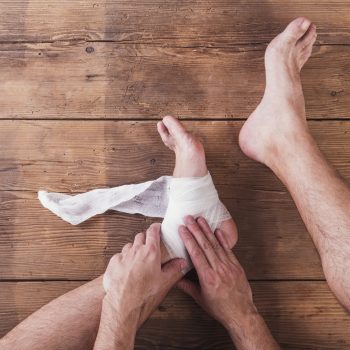A fracture of the ankle can affect one or more bones that make up the joint: tibia, fibula and astragalus. Based on this eventuality, and the degree of severity of the fracture, the choice whether to intervene surgically will be evaluated. The form of treatment chosen will also be relevant for the definition of the rehabilitation path that the patient will have to follow: “In most cases, surgery is required, at the end of which it is essential to start a specific rehabilitation path depending on the basis of the initial indications agreed with the surgeon. If the treatment is not surgical, it is necessary to use supports to keep the joint in the correct position while awaiting bone healing and then continue with rehabilitation’, explains Dr. Cristiano Sconza, specialist in orthopedic rehabilitation at Humanitas.
The first stages
An important trait, regardless of the type of treatment performed, concerns the involvement of the other joints: ‘Initially, the rehabilitation does not work directly on the ankle, which must be protected, but on the other joints in order to maintain its function and muscle strength at knee, hip and pelvic levels. Moreover, the introduction of various types of physical therapy is useful, such as magneto-therapy, in order to give to the bone the stimulus to consolidate faster’.
The rehabilitation must inevitably follow the treatment of the pain, swelling and inflammation, therefore it is a period of rest for the patient: ‘Afterwards, the patient begins to perform specific exercises of muscle strengthening of the ankle, which will finally allow him to walk with a walker first, and then with crutches. After the first sessions, – explains Dr. Sconza – the patient will be progressively instructed to learn the exercises and reproduce them autonomously at home based on the indications programmed by the physiatrist and applied on the patient by the physiotherapist. Thus, periodic monitoring of the evolution of the clinical and functional framework will be performed by the physiatrist’.
In addition to physiotherapy, it will be possible to resort to other adjuvant treatment options, such as ‘tecar-therapy, laser therapy and in particular focal shock waves, a very important weapon in case of fracture consolidation delay’.
The final stages
The exercises of the last part of rehabilitation focus on one fundamental aspect: ‘The proprioception – reminds the specialist. This is a series of exercises aimed to recover the control of movements, balance and coordination, with the aid of tools such as simple proprioceptive tablets, up to the use of much more complex electronic platforms. The training will be aimed to give the patient the ability to move as well as possible and return to a condition of wellbeing like before the injury occurred’ concludes Dr. Sconza.










